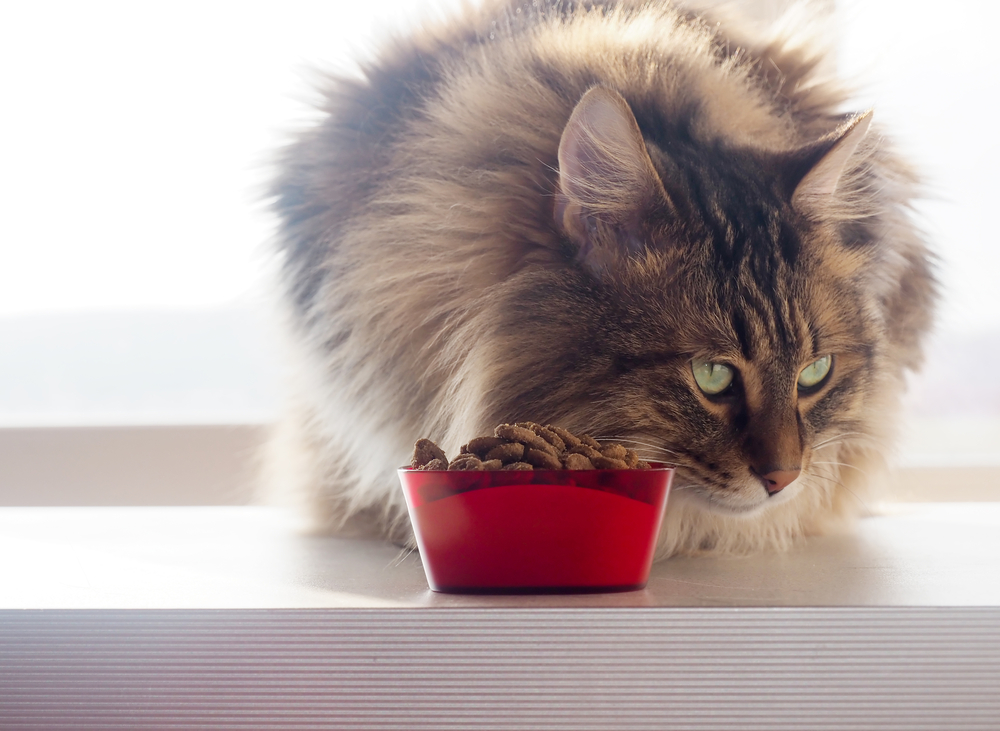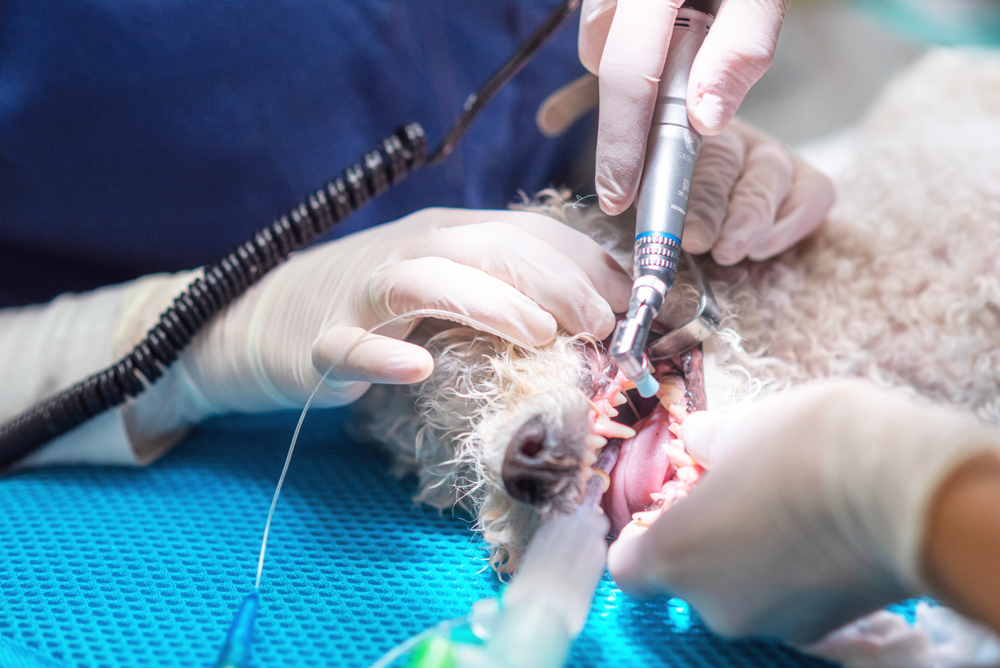You and your pet are more alike than you think—you both enjoy each other’s company, love getting packages delivered, and have the same dental care needs.
And, although you may differ on the source of the finest water—the tap or the toilet?—or what is more edible—sushi or shoes?—you share a common threat in dental disease. Fortunately, you already have the necessary knowledge to combat this painful and progressive condition. Take a page from your own dental care regimen and have your pet’s teeth professionally cleaned at Caldwell Animal Hospital.
What is a professional dental cleaning for pets?
Professional veterinary dental cleanings or, more formally, veterinary comprehensive oral health assessment and treatments (COHATs) are similar to your bi-annnual dental cleanings at your dentist. They include:
- Dental X-rays
- Examination and charting
- Periodontal pocket measurements
- Scaling
- Polishing
Also like your own dentist visit, a dental cleaning’s primary goals include:
- Identifying pathology or problem areas (e.g., broken or damaged teeth, infection, inflammation, cavities)
- Removing plaque and tartar from above and below the gum line
- Staging dental disease
However, because pets don’t take directions, such as “Open,” “Close,” “Turn,” and “Spit,” veterinary dental cleanings must be performed under anesthesia.
Is anesthesia necessary for veterinary dental cleanings?
Humans can rationalize the purpose and need for professional dental care, yet nearly 50% experience some level of dental anxiety. Undoubtedly, your pet—who cannot understand or consent to such an invasive process—would experience significant physical and emotional distress.
Anesthesia is critical to ensuring your pet’s comfort and safety. Other important benefits include:
- Veterinary team safety — Immobilized pets cannot bite or scratch the veterinary team.
- Airway protection — Intubation protects your pet’s lungs from water and debris.
- Thorough assessment — Sedated pets allow the veterinary team to view the entire oral cavity.
- X-ray imaging — Dental disease attacks the tooth’s root. X-rays provide a complete view of each tooth, including the visible crown, subgingival root, and the surrounding structures and bone.
- Subgingival cleaning — High-tech instruments allow safe cleaning below the gum line, which is unreachable in awake pets.
- Pain management — Probing, scaling, and polishing are uncomfortable processes that dental disease makes worse, but our hospital anesthetic protocol includes pain medication, and anesthetized pets are given local anesthesia (i.e., numbing injections), as needed.
Is dental anesthesia safe for my pet?
At Caldwell Animal Hospital, patient safety is our number one priority. But, while we take pride in our detailed protocols and extensive safety measures, anesthesia always involves some risk. We strive to minimize this risk as much as possible with preemptive steps that include:
- Extensive team training
- Pre-anesthetic blood work and diagnostic testing
- Intravenous (IV) catheter
- IV fluids
- Intubation
- Patient warming devices
- Electronic vitals monitoring
- Continuous hands-on monitoring provided by a trained technician
- Balanced anesthesia (i.e., pain relief, sedation, anesthetic agent)
- Supported and monitored recovery phase
For further information about our anesthetic practices, check out this previous blog post where we answer common questions about anesthetic safety.
Are some pets at greater dental disease risk?
Breed, genetics, and size can play a role in your pet’s dental health. Although at least 70% of cats and 80% of dogs show dental disease signs by the age of 3, toy-breed dogs and brachycephalic (i.e., flat-faced) dogs and cats often experience signs much earlier. These pets generally suffer from structure-related issues, such as overcrowded teeth, retained deciduous (i.e., baby) teeth, and malocclusion (i.e., under or overbite), which can increase plaque and tartar accumulation.
Like humans, aging pets often pay the price for early dental neglect. Senior dogs and cats who have not received routine dental cleanings commonly require extensive procedures to remove infected and rotten teeth.
How often does my pet need a professional dental cleaning?
As part of your pet’s annual or bi-annual wellness examination, your Caldwell Animal Hospital veterinarian will perform an awake oral assessment to look for visible dental disease signs. However, because most early damage occurs below the gum line, yearly dental cleanings and X-rays under anesthesia are often advised. Much like your own annual dental cleaning, your pet’s visit will ensure early identification and treatment of any concerning changes, and allow you to preserve or correct your pet’s oral health and alleviate their pain.
At-risk pets, including those described above and pets with previously diagnosed dental disease, may require twice-yearly cleanings.
How can I tell if my pet has dental disease?

At-home pet dental care, such as toothbrushing and feeding a therapeutic dental diet, can effectively maintain your pet’s oral health between veterinary visits. At-home care is also a great way to monitor your pet’s mouth for disease signs that may arise, despite a clean bill of health during their wellness exam.
Contact Caldwell Animal Hospital for a dental consultation if you notice visible or behavior-related changes, such as:
- Bad breath
- Red, irritated, or swollen gums
- Trouble chewing
- Dropping food
- Blood in the water bowl or on toys
- Pawing at the mouth or face
- Unusual drooling
- Heavy tartar or discolored teeth
- Broken or cracked teeth
Your pet’s dental needs are a lot like your own, except they can’t make the proactive choices necessary to protect their teeth and gums—it’s up to you to make the call. Contact Caldwell Animal Hospital to schedule your pet’s wellness appointment or book a dental consultation.







Leave A Comment